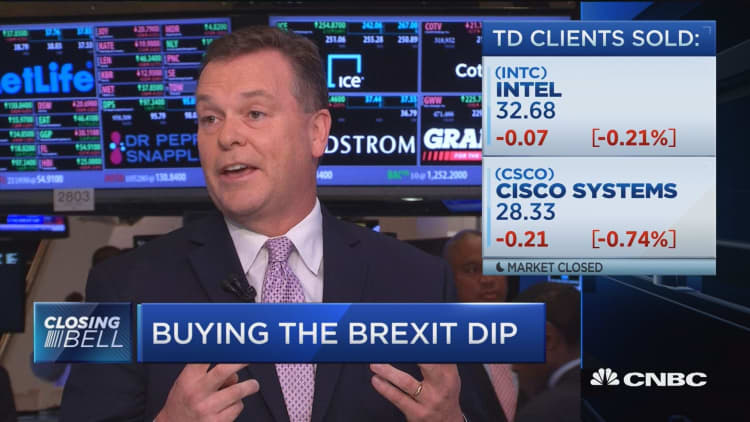
As growth concerns swirl, traders on Wednesday will get one of the final snapshots of the U.S. economy before the Brexit surprise.
"This data was pre-Brexit. We can assume if the global economy's going to slow post-vote, we can see how it was pre-vote," said Peter Boockvar, chief market analyst at The Lindsey Group.
Economic reports due Wednesday include the Federal Reserve's June meeting minutes, the May trade deficit and service sector data.
The ISM nonmanufacturing PMI is expected to edge up from 52.9 in May to 53.3 in June, according to analysts polled by Reuters. The final Markit services PMI for June was initially reported at 51.3 and was unchanged from May.
"My guess is it's more of what happens overseas, because any data we get is [from] before Brexit and before rates plunged to new lows," said Joseph LaVorgna, chief U.S. economist at Deutsche Bank Securities.
The 10-year Treasury yield hit a record low of 1.357 percent Tuesday, according to Reuters Tradeweb data going back to 1953. The 30-year Treasury yield fell below its record touched Friday to hit fresh lows and was last near 2.16 percent.
"The question for the market right now is how much of that is a flight to safety, a flight to safety just to gain yield or just worries about economic growth," said Quincy Krosby, market strategist at Prudential Financial.
The nonfarm payrolls report due Friday is in focus after a sharp disappointment last month. ADP and weekly jobless claims are due Thursday.
U.S. stocks closed lower Tuesday, the first trading day of the holiday-shortened week, with energy, materials and financials leading decliners. The defensive utilities and consumer staples sectors were the only gainers, as the benchmark U.S. 10-year Treasury yield hit a record low.
"The defensive stance, it's not about the world falling apart, but it's about being positioned if [there is] potential risk, something that didn't happen before the referendum," said Andres Jaime, global FX and rates strategist at Barclays.
He noted that U.S. data cannot be ignored, but right now the spillover effects of Brexit are more important for markets.
On Tuesday, pound sterling briefly fell below $1.300 and held around levels not seen in more than 30 years. The U.S. dollar index was more than half a percent higher, with the euro near $1.107 and the near 101.7 yen versus the greenback.
Britain voted to leave the European Union in a referendum held June 23. The largely unexpected result has significantly increased uncertainty for investors already cautious about slowing global growth.
U.K. Prime Minister David Cameron announced his resignation after the leave camp won, putting in question the leadership that will actually carry through with the U.K.'s departure from the EU.
Analysts Tuesday were concerned that Brexit could have more negative effects on the financial industry.
The fund arm of insurer Standard Life, Standard Life Investments, suspended trading in its U.K. real estate fund on Monday after the Brexit uncertainty led to an increase in redemption requests, Reuters said.
In addition, Italian banks were already struggling before Brexit and questions about their ability to support lending operations remain.
"Markets certainly want to get some indication there isn't going to be any financial stress in Europe from this Brexit mess," said Thierry Albert Wizman, global interest rates and currencies strategist at Macquarie.
Federal Reserve Governor Daniel Tarullo is scheduled to speak at 9 a.m. ET Wednesday on monetary policy and financial regulation. New York Fed President William Dudley is set to speak at 8 a.m. ET on community development challenges in Binghamton, NY.


